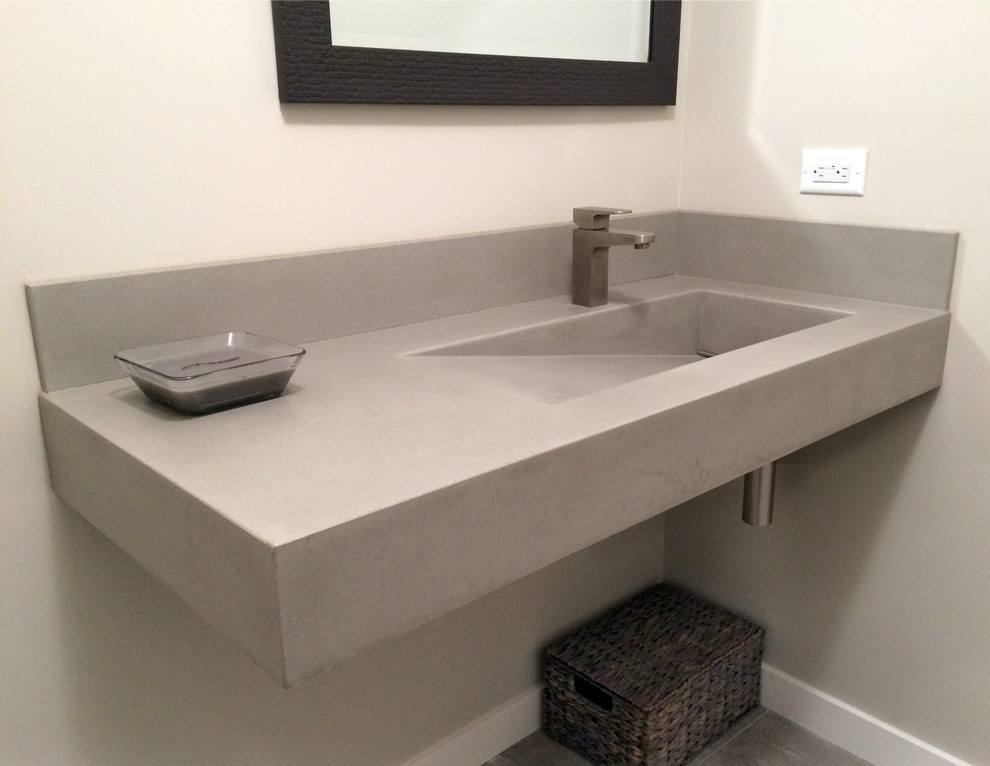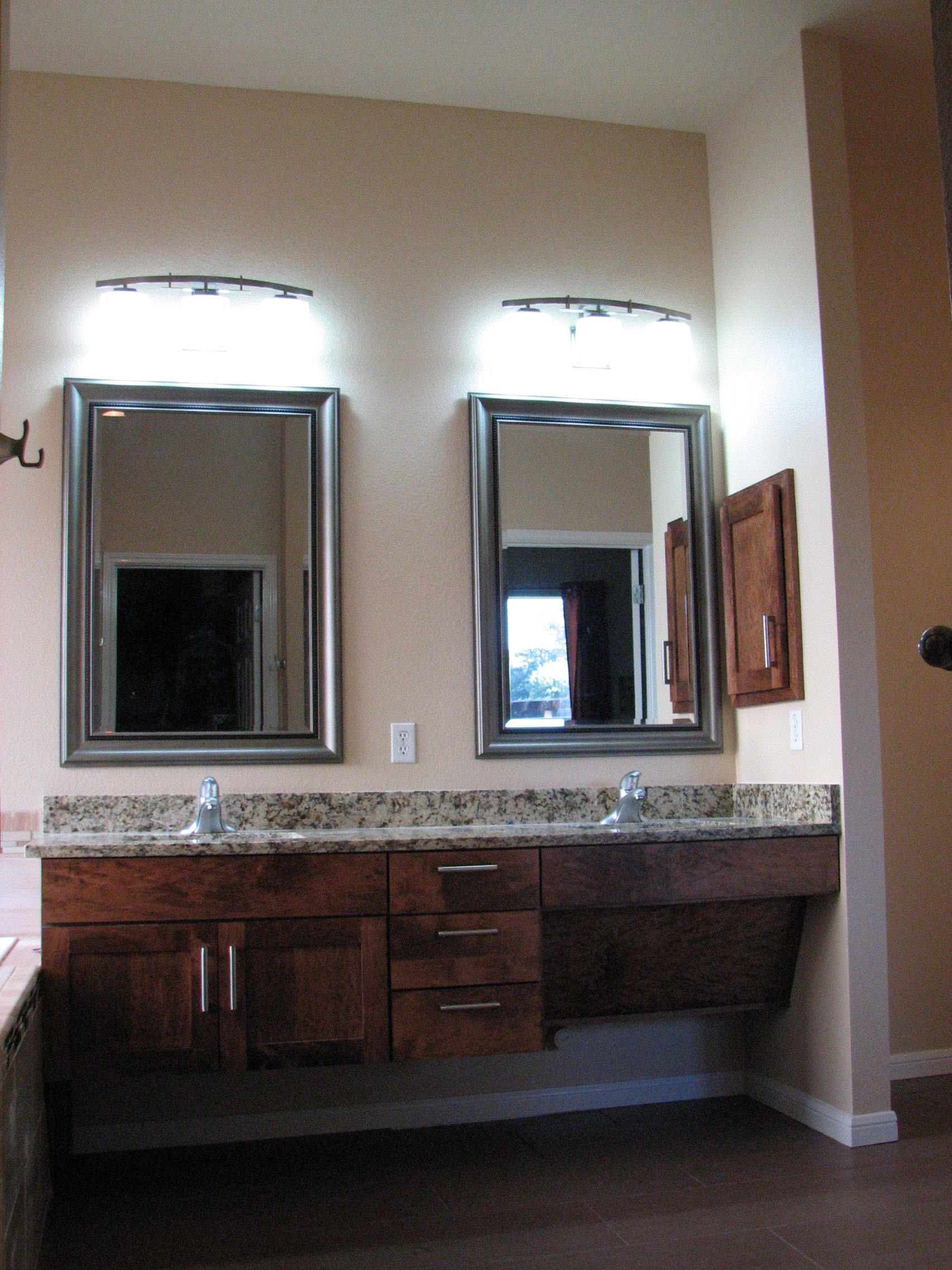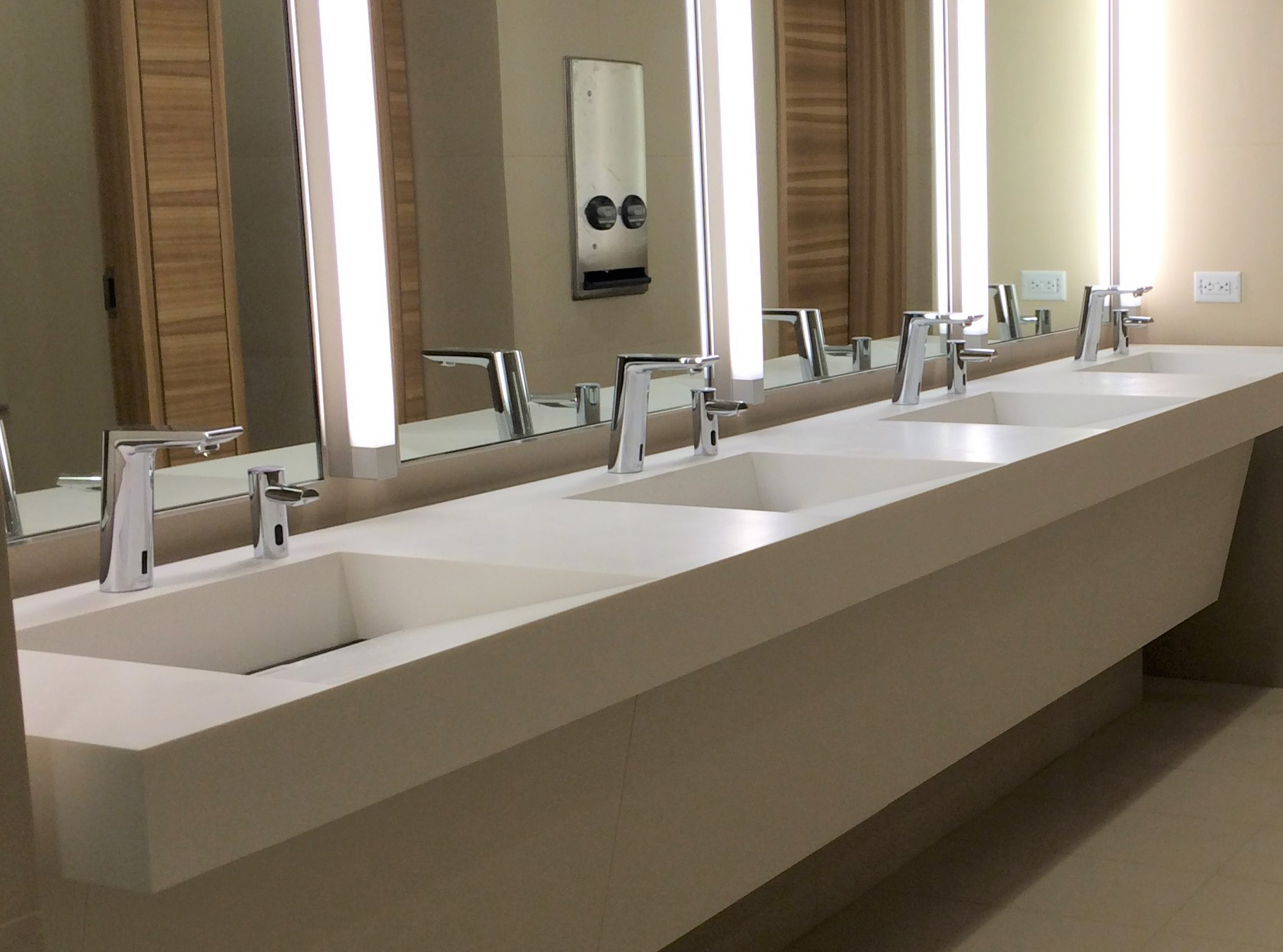Understanding the Importance of ADA-Compliant Bathroom Sinks and Countertops
Creating inclusive and accessible spaces is crucial for ensuring equal opportunities and rights for individuals with disabilities. One area that requires special attention is the bathroom, as it plays a vital role in daily activities. ADA-compliant bathroom sinks and countertops are essential components in making bathrooms accessible for everyone. Let’s explore the importance of ADA-compliant bathroom sinks and countertops and how they contribute to creating inclusive environments.
- Promoting Independence and Safety: ADA-compliant bathroom sinks and countertops are designed with accessibility in mind. They are built at specific heights and dimensions, allowing individuals with mobility limitations to use them comfortably and safely. These features promote independence and reduce the risk of accidents or injuries that may occur when using non-compliant fixtures.
- Ensuring Equal Access: By installing ADA-compliant bathroom sinks and countertops, businesses and public facilities demonstrate their commitment to providing equal access to all individuals. These fixtures ensure that people with disabilities can use the facilities without encountering unnecessary barriers. This inclusivity fosters a sense of belonging and dignity for everyone, regardless of their abilities.
- Meeting Legal Requirements: The Americans with Disabilities Act (ADA) sets guidelines for accessible design in public facilities, including bathrooms. Compliance with these regulations is not only ethically important but also legally required. ADA-compliant bathroom sinks and countertops help businesses and building owners avoid legal issues and potential penalties for non-compliance.
- Catering to a Diverse Range of Needs: ADA-compliant bathroom sinks and countertops are designed to accommodate various needs and disabilities. They feature features such as knee clearance, lever-operated faucets, and tactile indicators for visually impaired individuals. These design elements ensure that individuals with different abilities can use the sinks and countertops comfortably and independently.
- Enhancing User Experience: In addition to meeting accessibility requirements, ADA-compliant bathroom sinks and countertops also enhance the overall user experience. They are built with durable materials that are easy to clean and maintain. The well-thought-out design and functionality contribute to a positive and hassle-free experience for all users.

Key Considerations for ADA Bathroom Sink and Countertop Installation
Designing accessible spaces requires careful planning and attention to detail. When it comes to ADA bathroom sink and countertop installation, there are specific considerations that need to be taken into account. Here are several key considerations for designing accessible spaces and ensuring the proper installation of ADA-compliant bathroom sinks and countertops.
Clear Floor Space and Maneuverability: One of the primary considerations for ADA bathroom sink and countertop installation is ensuring sufficient clear floor space and maneuverability. The ADA guidelines specify the minimum dimensions required for the approach, clearances, and turning spaces. It is essential to carefully measure and plan the layout to provide ample space for individuals using mobility aids, such as wheelchairs or walkers, to navigate comfortably.
Height and Reach Requirements: ADA-compliant bathroom sinks and countertops have specific height and reach requirements to ensure accessibility for individuals with different abilities. The sink should be mounted at a height that allows for easy use from both a seated and standing position. Additionally, the faucet controls and soap dispensers should be within reach range for individuals using mobility aids.
Knee Clearance and Insulation: Another critical consideration is the provision of knee clearance underneath the sink. This feature allows individuals using wheelchairs to approach the sink comfortably. The knee clearance should be free of any obstructions, such as pipes or support brackets. Additionally, proper insulation around the hot water pipes beneath the sink is necessary to prevent burns or injuries.
Faucet and Controls: ADA guidelines recommend the use of lever-operated or touchless faucets for accessibility. These types of faucets are easier to operate for individuals with limited dexterity or strength. It is important to choose faucets with clear markings and easy-to-understand controls to ensure usability for all users.
Material Selection and Maintenance: When selecting materials for ADA bathroom sinks and countertops, it is crucial to consider durability, ease of maintenance, and slip resistance. The chosen materials should be able to withstand frequent use and be resistant to stains and damage. Additionally, the surface should be slip-resistant to enhance safety and prevent accidents.
Visual and Tactile Features: For individuals with visual impairments, incorporating visual and tactile features is essential. These features can include color-contrasting elements, tactile indicators, and Braille signage. Properly placed and designed features ensure that individuals with visual impairments can navigate and use the bathroom sinks and countertops independently.
Exploring the Features of ADA-Approved Bathroom Sinks and Countertops
ADA-approved bathroom sinks and countertops are designed to meet the specific accessibility requirements outlined in the Americans with Disabilities Act (ADA). These fixtures incorporate various features that enhance usability and ensure equal access for individuals with disabilities. Below are the features of ADA-approved bathroom sinks and countertops and how they contribute to creating inclusive environments.
Height and Clearance: ADA-approved bathroom sinks are designed to be mounted at a specific height to accommodate individuals using wheelchairs or mobility aids. The height allows for comfortable and convenient use from a seated position. Additionally, the sinks provide sufficient knee clearance underneath, allowing individuals to approach the sink without obstacles.
Faucet Controls: Faucet controls are an essential feature of ADA-approved bathroom sinks. Lever-operated or touchless faucets are recommended to ensure ease of use for individuals with limited dexterity or strength. The controls should be easy to operate and understand, providing a seamless user experience for all users.
Tactile Indicators and Braille Signage: ADA guidelines recommend the incorporation of tactile indicators and Braille signage to assist individuals with visual impairments. Tactile indicators can be placed on faucets, soap dispensers, and other relevant areas to provide tactile feedback and aid in navigation. Braille signage can be placed on sinks and countertops to provide crucial information to individuals with visual impairments.
Slip Resistance: ADA-approved bathroom sinks and countertops should have slip-resistant surfaces to enhance safety. The surfaces should be able to withstand wet conditions and provide sufficient traction to prevent accidents. The use of slip-resistant materials or coatings ensures that individuals can use the fixtures with confidence and without the risk of slipping or falling.
Durability and Easy Maintenance: ADA-approved fixtures are built to withstand frequent use and should be durable and easy to maintain. The materials used should be resistant to stains, scratches, and damage. Additionally, the surfaces should be easy to clean to maintain proper hygiene standards in bathrooms.
Integrated Support Features: In some cases, ADA-approved bathroom sinks and countertops may include integrated support features. These features can include grab bars or rails that provide additional stability and support for individuals with mobility limitations. Integrated support features enhance safety and allow individuals to use the fixtures with confidence.
Creative Design Ideas for ADA Bathroom Sinks and Countertops
Designing ADA-compliant bathroom sinks and countertops doesn’t mean compromising on style or functionality. With creative design ideas, it is possible to create aesthetically pleasing and highly functional spaces that meet the accessibility requirements outlined in the Americans with Disabilities Act (ADA). Below are some creative design ideas for maximizing functionality and style when incorporating ADA bathroom sinks and countertops.
Customizable Vanity Cabinets: Consider incorporating customizable vanity cabinets that can be adjusted to accommodate different heights and wheelchair access. These cabinets can feature adjustable shelves, pull-out drawers, and removable panels, allowing for personalized storage solutions that meet individual needs. By customizing the vanity cabinets, you can create a seamless and integrated look while maximizing functionality.
Integrated Storage Solutions: Incorporate storage solutions that are easily accessible and within reach for individuals using wheelchairs or mobility aids. This can include open shelving, pull-out baskets, or adjustable-height cabinets. By integrating storage spaces into the bathroom sink and countertop area, you create a streamlined and efficient layout while ensuring accessibility.
Innovative Faucet Designs: Explore innovative faucet designs that combine functionality and style. Look for faucets with unique shapes or finishes that add visual interest to the space. Additionally, consider touchless or sensor-activated faucets that provide convenience and ease of use for individuals with limited dexterity or strength.
Contrasting Colors and Textures: Create visual appeal by incorporating contrasting colors and textures into the design of the bathroom sinks and countertops. Use different materials or finishes to create visual interest and highlight the sink and countertop area. For example, pairing a matte countertop with a glossy sink can create a visually striking contrast.
Ambient Lighting: Consider incorporating ambient lighting around the bathroom sinks and countertops to enhance visibility and create a welcoming atmosphere. Use wall sconces, recessed lighting, or LED strips to provide adequate illumination without creating glare or shadows. Proper lighting not only improves usability but also adds a touch of elegance to the space.
Accessible Mirrors: Incorporate accessible mirrors above the ADA bathroom sinks that are adjustable in height. This allows individuals of different heights and mobility needs to comfortably use the mirror. Consider installing mirrors with built-in LED lighting or anti-fog features to enhance functionality and convenience.
Decorative Backsplashes: Add a decorative backsplash behind the bathroom sinks and countertops to elevate the style of the space. Choose tiles or materials with interesting patterns, textures, or colors to create a focal point. The backsplash not only adds visual appeal but also protects the walls from water damage.
Integrated Seating: If space allows, consider incorporating integrated seating near the bathroom sinks and countertops. This can be in the form of a built-in bench or a fold-down seat. Integrated seating provides a convenient resting area for individuals who may need to take a break while using the sink or countertop.
Green Design Elements: Incorporate eco-friendly design elements into the bathroom sinks and countertops. Choose sustainable materials, such as recycled glass or reclaimed wood. Additionally, consider installing water-saving faucets or dual-flush toilets to promote environmental consciousness.
Accessible Storage Solutions: Think creatively about storage solutions that are accessible and functional. Install pull-out drawers or shelves that can be easily reached from a seated position. Consider incorporating adjustable-height storage options to accommodate different users’ needs. By prioritizing accessibility in storage design, you ensure that individuals can easily access their items.
Innovations in ADA Bathroom Sink and Countertop Solutions
Inclusive design is an ever-evolving field, and advancements in technology and materials continue to shape the future of ADA bathroom sink and countertop solutions. These innovations aim to enhance accessibility, functionality, and style, ensuring equal access for individuals with disabilities. Let’s explore the future of inclusive design and the exciting innovations in ADA bathroom sink and countertop solutions.
Smart Technology Integration: The integration of smart technology into ADA bathroom sinks and countertops is a promising innovation. This includes features such as voice-activated controls, sensor-operated faucets, and temperature-adjustable surfaces. Smart technology enhances usability and convenience for individuals with disabilities, allowing for hands-free operation and personalized settings.
Adjustable Height and Modular Design: Innovations in adjustable height and modular design offer flexibility in ADA bathroom sink and countertop solutions. These features allow for customization based on individual needs and preferences. Adjustable height sinks and countertops can be easily raised or lowered to accommodate different users, while modular design allows for easy reconfiguration and adaptation as needs change over time.
Assistive Technology Integration: The future of ADA bathroom sink and countertop solutions includes the integration of assistive technologies. This can involve features such as built-in accessibility tools, voice guidance systems, or touch-sensitive surfaces for individuals with limited dexterity. Assistive technology integration promotes independence and ensures a user-friendly experience for individuals with disabilities.
Sustainable and Eco-Friendly Materials: Innovations in sustainable and eco-friendly materials are becoming increasingly important in ADA bathroom sink and countertop solutions. Manufacturers are exploring options such as recycled materials, low-impact manufacturing processes, and water-saving features. These advancements contribute to environmentally conscious design while maintaining the highest standards of accessibility and functionality.
Universal Design Principles: The future of ADA bathroom sink and countertop solutions involves a shift towards universal design principles. Universal design aims to create products and spaces that are accessible and usable by all individuals, regardless of their abilities. This includes features such as clear signage, intuitive controls, and inclusive design aesthetics. By incorporating universal design principles, ADA bathroom sink and countertop solutions become more inclusive and welcoming for all users.
Enhanced Durability and Maintenance: Advancements in materials and manufacturing techniques are improving the durability and ease of maintenance of ADA bathroom sink and countertop solutions. New materials offer increased resistance to scratches, stains, and water damage, making them more durable and long-lasting. Additionally, developments in surface coatings and finishes simplify cleaning and maintenance, ensuring that these fixtures remain in optimal condition for years to come.
ADA Compliant Concrete Technology Cement Elegance
Collins 2685-72 ADA Bathroom Vanity
ADA Compliant Bathroom Vanity
ADA Compliant Bathroom: Sinks and Restroom Accessories – LaForce, LLC
Everything Including the Bathroom Sink: Solid Surface Elegance and
ADA Compliant Vanity Handicap bathroom design, Accessible
Related Posts:









